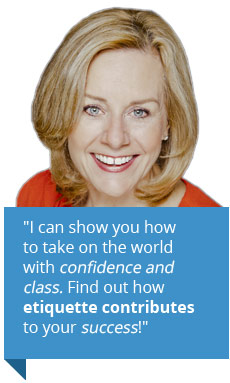Latest Posts
April 12, 2014
 The Masters, one of the most prestigious golf tournaments in the world, is in full swing! I’m not a huge golf fan, but a friend of mine had the opportunity to spend the day at The Masters during practice rounds and Par 3 tournament this week. One of her biggest takeaways, besides the fact that it is “one of the most beautiful places you’ve ever seen,” was that the experience was made extra special by the attention provided by staff. Every encounter, from the front gate attendants to the security guards, was outstanding. Even in the hectic pro shop, the clerk helping her with a purchase had a big smile and pleasant small talk. Every person she encountered was friendly and efficient – and displayed impeccable manners.
The Masters, one of the most prestigious golf tournaments in the world, is in full swing! I’m not a huge golf fan, but a friend of mine had the opportunity to spend the day at The Masters during practice rounds and Par 3 tournament this week. One of her biggest takeaways, besides the fact that it is “one of the most beautiful places you’ve ever seen,” was that the experience was made extra special by the attention provided by staff. Every encounter, from the front gate attendants to the security guards, was outstanding. Even in the hectic pro shop, the clerk helping her with a purchase had a big smile and pleasant small talk. Every person she encountered was friendly and efficient – and displayed impeccable manners.
As the tournament is played at the prestigious Augusta National Golf Club, it didn’t surprise me that the level of professionalism and courtesy was top-notch. It was really great to hear, however, how much that affected my friend’s experience. Think about the times when you’ve spent time or money on something special and the experience was less-than-stellar simply because of the way the staff treated you.
Golf, in itself, is a sport where good manners and proper etiquette are part of the experience. It’s an unspoken expectation for both players and spectators. Without the supervision of a referee or umpire, the game relies solely on the integrity of its players to follow the rules and demonstrate courtesy and good sportsmanship.
In business, taking a client out for a round of golf is a great way to get to know each other better. If you’re new to golf, here are a few etiquette and protocol tips to follow:
- Men typically wear comfortable lightweight pants and a golf shirt when on the golf course. On cooler days, a knitted golf vest over your golf shirt is a good option.
- The most popular attire for women golfers includes the polo-style shirt and casual pants. On warmer days, shorter slacks, such as capris or shorts, are acceptable—knee length or longer. Skorts and golf dresses are also popular choices. Note: denim of any kind is not acceptable attire for the golf course.
- Reserve a tee time – and make the tee time.
- Plan to arrive at least 30 minutes advance of your tee off time. Head to the driving range and practice your swing.
- Leave your cell phone in the car.
- Always ensure that no one is in a position to be hit by the club, ball or twigs before they make a stroke.
- All players must be out of range before you tee off.
- If your ball heads in the direction where it is in danger of hitting someone, you must shout a warning. “Fore” is the traditional warning.
- Don’t move or talk loudly or make unnecessary noise while other golfers are playing. Think of the green as a library.
- Play at a good pace. What golfers call “slow play” delays the group behind you and if this happens, you should invite the group behind you to play through. When the play has been completed, move quickly to the next tee.
- If you lose your ball, you can choose to use a provisional ball or invite the players behind you to play through.
- If you cause any damage to the putting green during play, it’s your responsibility to repair the divot. (Here is a great divot repair animation.)
- Rake the sand bunkers after hitting your ball to remove your footprints.
- Replace the flagstick in the hole before leaving the putting green.
Golf etiquette is an essential part of the game. Being courteous to other players, and kind to the course, will ensure that everyone’s game is up to par! Enjoy the day!
Photo credit: Dave Morrison
Continue Reading »
 Print This Post
Print This Post
Posted by Margaret in Everyday Etiquette and tagged The Masters 2014
April 7, 2014
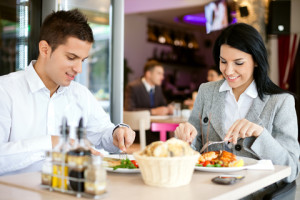 I’m a huge fan of OpenTable, for so many reasons. You can search for a specific restaurant to make a reservation, or key in an area to find restaurants that have availability for a specific day and time. You can also tailor your search by price and cuisine, and get a preview of special offers around specific holidays.
I’m a huge fan of OpenTable, for so many reasons. You can search for a specific restaurant to make a reservation, or key in an area to find restaurants that have availability for a specific day and time. You can also tailor your search by price and cuisine, and get a preview of special offers around specific holidays.
For sales people meeting with clients for business lunch or dinner meetings, this makes it so much easier to ensure that the client receives all the information they need prior to the meeting. Once you book the reservation, a confirmation is sent to your email and you can then just forward the details to the client.
I use the OpenTable app all the time and it’s great for finding those unique restaurants that you may not know existed. When I was in Toronto for a speaking engagement I was planning lunch with a friend who I know liked interesting experiences. I checked OpenTable and found a chocolate and tea place nearby. And what a cool place it turned out to be! The restaurant was decorated in a modern style, but with a twist. On the walls was a collection of beautiful antique teapots and the glass display case was filled with Technicolor macarons and other delectable goodies!
If you’re trying to make an impression, or want to share a unique dining experience with a friend or a client, OpenTable saves you time and allows you to discover hidden dining treasures. It takes going to a restaurant out of the realm of something you “need” to do and makes it much more delightful.
 OpenTable is also testing out another feature that I think will be a huge hit with diners. They recently launched a pilot program in San Francisco that enables you to pay your bill via the OpenTable iPhone app. After you book your reservation you’re asked if you’d like to pay for your meal using the app. If you agree, you simply scan your credit card using the app and your card remains on file. At the end of your meal, just open the app to see your bill. This new feature takes the guesswork out of how much to tip, as well. Just tap a button for 15 percent, 20 percent, or higher – and you’re done. A receipt is then sent to you so you can keep it for your records.
OpenTable is also testing out another feature that I think will be a huge hit with diners. They recently launched a pilot program in San Francisco that enables you to pay your bill via the OpenTable iPhone app. After you book your reservation you’re asked if you’d like to pay for your meal using the app. If you agree, you simply scan your credit card using the app and your card remains on file. At the end of your meal, just open the app to see your bill. This new feature takes the guesswork out of how much to tip, as well. Just tap a button for 15 percent, 20 percent, or higher – and you’re done. A receipt is then sent to you so you can keep it for your records.
Another benefit? You can earn dining rewards points when you make (and honor) reservations made through OpenTable. Get paid to dine out? Now that’s pretty cool!
Of note: It’s even more important than ever to keep the reservations you’ve booked through OpenTable – or cancel them if your plans change. If you rack up “no-show,” your account will be banned.
Continue Reading »
 Print This Post
Print This Post
Posted by Margaret in Business Etiquette, Just for Fun and tagged dining etiquette, OpenTable
March 27, 2014
Today’s article is written by Dr. Loren Ekroth.
 In today’s article I draw upon nature, mainly biology, to find a new paradigm for relating to others. In short, it is this: When we do more than connect, when we add something that gives more vitality to those we connect with, everybody gains.
In today’s article I draw upon nature, mainly biology, to find a new paradigm for relating to others. In short, it is this: When we do more than connect, when we add something that gives more vitality to those we connect with, everybody gains.
Definition of pollinate: To transfer pollen from a stamen to a pistil; fertilization in flowering plants.
Without bees and butterflies, no pollination. Without pollination, no flowering, no honey or corn. Pollination helps both to co-evolve.
Definition of networking: To meet people who might be useful to know, especially in your job, but also in social life.
Many business and professional meetings set aside a time for “networking” during which attendees chat and exchange business cards. But often that time is too short for people to make meaningful connections. Then it becomes a “meet and greet” that resembles “hit and run.”
I’ve come to believe that effective networking requires pollination, which adds something of value to both participants. The pollinator gets a reward such as nectar for pollinating the plant.
Here is a description by George Bernard Shaw of humans pollinating.
“If I give you an apple and you give me an apple, we both have one apple. But if I give you an idea and you give me an idea, we both have two ideas.” (Both prosper by gaining a new idea.)
Of course, for human pollination to work, both persons must be receptive to the transaction. (We all know people who resist ideas different from what they already believe.) People who interact only with like-minded others do not grow very much.
Four ways to pollinate are to:
- share your useful ideas and new perspectives
- validate people with your respect and enthusiasm
- be curious and learn about others
- help people connect with those they don’t know.
My late friend Anne Boe, author of “Is Your Net Working?” was clear that participants should “give without an expectation that doing so will reap an immediate reward.” Instead, she recommended that you give because it’s the right thing to do. Often a “go-giver” will eventually reap a benefit.
As psychologist Robert Cialdini describes in his book, “Influence,” the principle of reciprocity is powerful. When we give a gift, compliment a person, or do them a favor, the receiver usually feels a need to reciprocate, if not immediately, then later on.
When those interacting have different experiences or ideas, both can gain new perspectives. For example, when an an artist interacts with an engineer, a realtor with a teacher, a young adult with a senior, or a man with a woman.
Such “cross-fertilization” is more likely to occur when it’s planned. That’s what regularly happens in small Mastermind groups with a mixture of people and in “Knowledge Cafes” where participants take what they’ve learned at one table, then share that with new people at other tables.
The principle is this: Pollination is more likely to occur when an event like a business mixer event has a variety of people. Not birds of a feather gathering together, but birds of different feathers.
The most satisfying experiences of my professional life as a university professor of communication came from interacting with colleagues of different disciplines such as philosophy, religion, anthropology, psychology, linguistics, music, and art. I did not want to remain only in my own “silo” of thought, and I was greatly enriched by interacting with a variety of others.
So I ask you: How and where can you apply the methods described above?
Used with permission of Dr. Loren Ekroth, publisher of “Better Conversations” newsletter. Complimentary subscriptions at www.conversationmatters.com
Continue Reading »
 Print This Post
Print This Post
Posted by Margaret in Communication and tagged networking tips
March 17, 2014
 There are some women who are insulted if they are referred to as a lady – especially in a business setting. An example being: “I’d like to introduce to you, Jane Smith, the lady I worked with on the XYZ project.”
There are some women who are insulted if they are referred to as a lady – especially in a business setting. An example being: “I’d like to introduce to you, Jane Smith, the lady I worked with on the XYZ project.”
Isn’t it ironic that if we use the term “gentleman” in that same sentence, it doesn’t feel like a slight? “I’d like to introduce you to John Smith, the gentleman I worked with on the XYZ project.”
So, why are some women so turned off by the word “lady”? I wonder if it bothers some women because we are still trying to fit into a man’s world. That no matter how successful we become, we are on guard for the slightest threat that would diminish our credibility.
On the flip side, I found this New York Times article, dated January, 1887, that recalls a story where a gentleman knocked down a cabman because he had addressed his wife as a woman and not a lady. The author goes on to say “None of us would think it derogatory to speak of our wives or mothers as being charming, clever or beautiful women. But none of us, unless speaking in anger or in strong rebuke would address either his mother, his wife, or his sister as woman, and strange to say, this prejudice does not seem to be of modern date.”
That was then. And this is now. Times have definitely changed.
I used to frequent a restaurant in the States and the very friendly waitress always welcomed me with a “Hey Sweetie! What can I get you?” At first I found it odd that she would call me sweetie. After all she didn’t even know me. But eventually I came to see everyone had a smile for her and she loved what she was doing. And if is it one thing that the North American workplace can use is a lot more people enjoying what they are doing.
And what about the word “girls”? I know many women who dislike being called a girl. I get a chuckle out of it now. And the older I get, the more I seem to enjoy in. And why not be okay with that? There are plenty of other “names” that we could be called that are truly demeaning.
I believe that in the end, whether a person calls you “Hon, Sweetie, Doll, Princess, Lady, or Woman, we have to left it go. The person’s intention was not to criticize or demean us. It’s our own rulebook where the Judgement, with a capital “J,” is made. Each of us has a unique basis of interpretation, so that is unavoidable. What’s important is that we try to understand each other, and simply take some things with a grain of salt.
And remember this: if the worst thing that’s happened to you today is that someone violated how you prefer to be addressed you’re having a pretty good day!
From Shakespeare’s play Romeo and Juliette: “A rose by any other name would smell as sweet.”
Continue Reading »
 Print This Post
Print This Post
Posted by Margaret in Communication and tagged addressing people, lady, woman, Gain Confidence, Class and Communication Skills with Etiquette Products
February 19, 2014
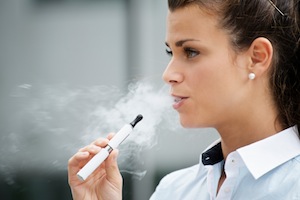 As the electronic cigarette movement grows, many smokers are using their devices in public places – and that is causing quite a stir around the world. While the popularity of the e-cigarette is on the rise, the etiquette of public use of the device remains fuzzy.
As the electronic cigarette movement grows, many smokers are using their devices in public places – and that is causing quite a stir around the world. While the popularity of the e-cigarette is on the rise, the etiquette of public use of the device remains fuzzy.
First of all, not everyone is familiar with the e-cigarette and if you’re puffing away in a movie theatre, don’t be surprised if you are asked to put it out – or in this case, turn it off.
The big debate over these battery-powered cigarette look-alikes is this: Should people be allowed to “light up” whenever and wherever they choose? Or should e-cigarettes be treated like “real” cigarettes—and kept out of restaurants, bars, grocery stores, airplanes and any other place “no smoking” rules apply.
London’s Heathtrow’s airport recently opened the world’s first airport “vaping” zone – a lounge dedicated to use of e-cigarettes. And this adds to the confusion as the airport strictly forbids all other forms of smoking—fueling the debate whether “vaping’ is considered smoking.
And the answer is “yes, I believe it is, until we know more about it.”
I believe that the etiquette for e-cigarette use is the same as that of real cigarettes. If in the future we find a health benefit, then we can give them more space in our worlds, but until then, let’s treat them as we would a cigarette.
Just this week the House Transportation Committee approved a bill banning cell phone calls during flights. Transportation Secretary Ray LaHood was quoted on Canadavapes.com as saying “Airline passengers have rights, and this new rules would enhance passenger comfort and reduce any confusion surrounding the use of electronic cigarettes in flight.”
Chicago and New York have already pushed back on the use of the devices, banning their use wherever smoking is taboo.
What exactly is an e-cigarette? The FDA website defines e-cigarettes as “battery-operated products designed to deliver nicotine, flavor and other chemicals. They turn chemicals, including highly addictive nicotine, into an aerosol that is inhaled by the user.”
Which leads me to my second point: just because you are exhaling vapor water doesn’t mean I want to inhale it. E-cigarettes are so new that it’s impossible to know the health risks, both to the person “vaping” and those exposed to the vapor.
The technology and gizmos that survive in the marketplace save us time and money, or make us feel special. Nowadays, the platinum rule is king. “Do unto others as you would have them do unto you.” Do others want to be around your vapor.
A recent survey of 1011 adults, conducted by Harris Interactive and commissioned by e-cigarette maker Mistic® came back with some interesting results. Of the more than 1000 American adults polled, nearly two-thirds said they would not be bothered by someone using an e-cigarette in close proximity.
“That’s good news for the e-cigarette industry, but that doesn’t mean vapers have carte blanche,” said John Wiesehan Jr., CEO of Mistic and survey spokesperson. “We wanted to better understand American attitudes when it comes to vaping in public, but also use the opportunity to lead the conversation about the need for proper etiquette when using electronic cigarettes or personal vaporizers.”
Just because e-cigarettes are not (yet) covered under most smoking bans, doesn’t mean you should “vape” wherever and whenever you please. E-cigarette smokers, like smokers, should light up outdoors, away from non-smokers.
I would love to hear your thoughts on the topic! Share in the comments below.
Continue Reading »
 Print This Post
Print This Post
Posted by Margaret in Everyday Etiquette
February 4, 2014
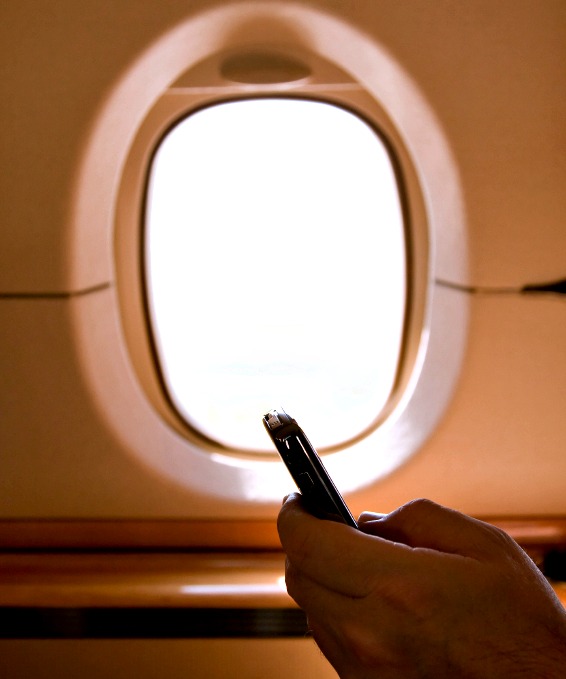 I was really surprised to hear that there is talk of lifting the ban on cell phone use on planes. Allowing the use of text messaging on planes is one thing, but how would you stop people from invading your personal space with their cell phone conversations if they lifted the ban?
I was really surprised to hear that there is talk of lifting the ban on cell phone use on planes. Allowing the use of text messaging on planes is one thing, but how would you stop people from invading your personal space with their cell phone conversations if they lifted the ban?
Imagine how distracting it will be to have hundreds of passengers talking on their phones while squeezed into a plane filled with people!
We are a society that are addicted to being connected. That’s for certain. And because of this, one of the perks of air travel is the forced break from making, receiving and hearing phone calls. But that may soon change. Under a new proposal by the U.S. Federal Communication Commission, passengers would be allowed to use their cell phone to make calls and send text messages once the plan reaches 10,000 feet.
With the limited personal space allowed us on planes these days, I just don’t see how this could work. Many travelers use the “airtime” to catch up on reading, enjoy the quiet, and even take a nap. And how can you do that when someone is invading your personal space with a phone conversation?
In a recent CNN article, Spud Hilton, travel editor for the San Francisco Chronicle spoke out against lifting the ban. “People would be carryon on loud, full voiced conversations right next to someone who doesn’t want to hear it.”
And I agree with him. We shouldn’t have to listen to another person’s private conversation when squeezed into such close quarters!
Even if they had a section of the plane where you could be “connected” – sound travels. Take AirAsia as an example. Last year they introduced a “quiet zone.” An adult-only section located between first class and economy, the intention was to provide a respite from the noise of those unhappy tiny passengers. But like cigarette smoke, the sound of a crying baby travels across the invisible barrier. And the same would be true of a cell phone section of the plane, should this be a consideration. It just wouldn’t work.
In our everyday lives, we’re already being hijacked by loud cell phone talkers – at the grocery store, restaurants, and doctor’s offices – and without the ability to separate from the noise, it would be very annoying.
It is TRULY a hijacking on an airplane!
I’m definitely not alone in my feelings about the use of cell phones on places. A recent poll from Quinnipiac University found that most people want silence when they fly. Almost 60% of those polled said they don’t want the use of cell phones on planes and only 30% said they were in favor of lifting the ban.
It’s also important to note that even if the U.S. Federal Communications Commissions is ready to allow in-flight cell phone use, some airlines might not be so eager to change the rules. Delta Air Lines has stated that voice calls will not be allowed on flights, even if the FCC allows it. Other airlines are saying that they will “study it along with feedback from customers.”
In the end it comes down to respecting a person’s personal space. The people who don’t – the loud talkers you encounter – are the very people who will spend the entire flight on their phone, without regard for the person seated next to them.
I’d love to hear your thoughts on this topic. Do you think it’s a good idea to allow passengers to talk on their cell phone during a flight? Take our quick poll!
Continue Reading »
 Print This Post
Print This Post
Posted by Margaret in Everyday Etiquette
January 16, 2014
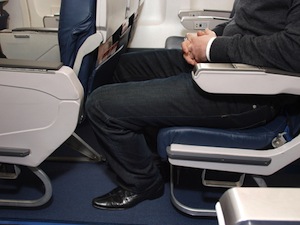 On a recent trip from Vancouver to Amsterdam, I encountered Passenger 22C – better known to me now as Mr. Rude. The wheels of the plane had literally just tucked themselves back in when Mr. Rude, who was sitting directly in front of me, flung his seat fully back and began to bounce around—bashing my knees several times with each bounce. This continued for a while as he flipped and flopped, trying to find a comfortable position in the tiny seat.
On a recent trip from Vancouver to Amsterdam, I encountered Passenger 22C – better known to me now as Mr. Rude. The wheels of the plane had literally just tucked themselves back in when Mr. Rude, who was sitting directly in front of me, flung his seat fully back and began to bounce around—bashing my knees several times with each bounce. This continued for a while as he flipped and flopped, trying to find a comfortable position in the tiny seat.
There was a point when he turned around and looked at me and I thought “Oh, good, he’s just figured out he’s bashing my knees with his seat!” But, no. Instead, he asked me why his seat couldn’t go back any further! “Because my legs are there,” I told him, assuming this would trigger an apology or at the very least, encourage him to pull the seat up a little.
Again, I was wrong.
Passenger 22C proceeded to push farther back on his seat, determined to make it recline farther, as though he were in a reclining chair in his living room! I leaned toward him and said “You’re hitting my knees again.” He didn’t even acknowledge me – or apologize!
Mid-flight, 22C returned from a bathroom break and as he stood in the aisle, I leaned over and asked him (very politely!) if he could please put his seat upright when he was not occupying it.
“Oh, I forgot,” was all he managed to mumble, as he jumped back into his seat. I wish I had a timer to track how long he sat quietly in his seat. I can say, it was no more than five minutes before he was pushing back on his seat again.
Passenger 22C left his seat reclined for the entire eight-hour flight—bouncing and pushing back against my knees. I was seated in an aisle seat, so my fellow seatmates struggled to get in and out of our row for bathroom breaks. With Passenger 22C’s seat tilted all the way back, there was little room for any maneuvering!
During the long, uncomfortable flight, I didn’t know if I was more upset with Passenger 22C or with myself. Should I have had a word with the flight attendant? Let her know that Passenger 22C’s seat was disrupting my comfort? Could I have been clearer with Passenger 22C – made my case in a way that made him rethink how much his reclined seat was hurting me. Literally. Bashing my legs!
My mind shifted to “karma.” Maybe somewhere, somehow, he would have his comeuppance for the discomfort and lack of sensitivity he had shown me for eight long hours.
Reclining seats have been with us as long as airlines began making human passengers a priority. The reclining seats—along with footrests and in-seat ashtrays – were designed as part of the airlines’ commitment to deluxe accommodations. It was all part of the experience. Back then passengers dressed in three-piece suits and sipped martinis in flight–stretching their long legs one way and tilting their seats the other. Back then, there was ample room to stretch out.
Times have changed.
The right to recline one’s seat is a topic of debate. If the seat goes back, use it, people say. But courtesy has to always come first. Before we lean our seat back, perhaps we can warn the person behind us—or even ask that person if it’s okay. Respect your fellow passengers so that everyone aboard can sit back and enjoy the journey.
What are your airplane etiquette pet peeves? Share with us in the comments below!
Continue Reading »
 Print This Post
Print This Post
Posted by Margaret in Everyday Etiquette and tagged airplane etiquette
January 9, 2014

Going to a spa is on my list of favorite things to do! It doesn’t matter if it’s a destination spa or a day spa where I live–I love it all!
I have been to spas in Asia, Europe, Australia, South America, North America and on the high seas. And spas keep getting better and better — providing more ambiance and exotic services. They rarely disappoint.
Continue Reading »
 Print This Post
Print This Post
Posted by Margaret Page in Newsletters
January 8, 2014
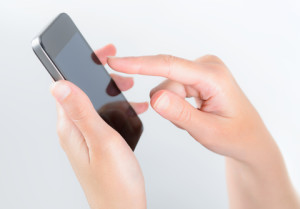 Everyone has a cell phone these days—and many use it for both business and pleasure. In today’s world, you and I are so accessible —but where do we draw the line on communication etiquette.
Everyone has a cell phone these days—and many use it for both business and pleasure. In today’s world, you and I are so accessible —but where do we draw the line on communication etiquette.
A friend recently shared that one of her clients refuses to use email. Or at the least, it’s used as a last resort. A young man, he uses his cell phone for all his business communication, and he’s a big-time texter. While my friend does have a cell phone, typically she uses it to call clients, check email and most of the texting she does is for personal communication – quick texts to ask her husband to pick up milk on his way home from work and that kind of thing. Her cell phone is listed on her business card and email signature, but she was surprised when the first text popped up on her phone from this client.
With a growing popularity to text messaging (and mobile phone use, in general), it’s not surprising that texting as a form of business communication is on the rise, but there definitely needs to be some guidelines as to how to use it.
Here are a few etiquette tips to keep in mind:
- Make sure you have the right number. As with email etiquette, begin your initial text message with a salutation so that the recipient is sure the text is intended for him or her. Something like, “Hello Margaret…” If you receive a text message that is not intended for you, be sure to text back with a polite “I’m sorry, I think you have the wrong number.”
- Introduce yourself. If you’re text-messaging someone for the first time, they may not have your cell phone number programmed into their phone. Best to start the message with something like “Good morning, it’s Jennifer Lawson from XYZ Corporation…”
- Manners matter. Though it’s easy to send off a quick text, the same rules of courtesy apply. Be cognizant of the time of day – especially if there is a time zone difference. Many a pleasant slumbers have been interrupted by the buzzing and beeping of a cell phone on the nightstand.
- Skip the abbreviations. It’s tempting to use shortcuts, like “u” (you) or “Gr8” (great) when tapping a quick note, and that can appear too casual or unprofessional. Like any type of communication, when writing a text think about who the message recipient. It’s safest to type out the entire word or phrase when communicating with business contacts by text message.
- Think before you text. Avoid sharing anything confidential, proprietary or potentially embarrassing by text message.
- Be patient. Just because texting is “instant” communication, doesn’t mean the recipient is in a position to answer at that exact moment.
- Turn it off. Just as answering your cell phone during a conversation is taboo, texting someone else during a face-to-face is just plain rude. If you must respond to a text message, politely excuse yourself to handle it outside the room.
Do you use text messaging as a way to communicate with business contacts? Share your comments below.
Continue Reading »
 Print This Post
Print This Post
Posted by Margaret in Business Etiquette and tagged business etiquette, business communication tips, text messaging etiquette
January 2, 2014
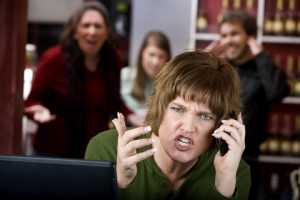 Yesterday, before a grueling dental appointment I stopped for a bite to eat at Whole Foods. When I discovered all the tables were occupied I headed for the long counter–somewhere I would not normally sit for lunch. As it was a high counter it took me a few minutes to position everything. My handbag–not appropriate to be on the counter…think of the germs –not good Feng Shui to set it on the floor, so the only spot left was hanging from my bent knee. Grocery bag on the floor, food in front of me, knife and fork ready, napkin on my lap…I was settled in for a nice lunch.
Yesterday, before a grueling dental appointment I stopped for a bite to eat at Whole Foods. When I discovered all the tables were occupied I headed for the long counter–somewhere I would not normally sit for lunch. As it was a high counter it took me a few minutes to position everything. My handbag–not appropriate to be on the counter…think of the germs –not good Feng Shui to set it on the floor, so the only spot left was hanging from my bent knee. Grocery bag on the floor, food in front of me, knife and fork ready, napkin on my lap…I was settled in for a nice lunch.
It would be hours before I could eat anything as my mouth would be numb from my dental work, so I was going to enjoy it!
Just as I began enjoying my meal a woman stood behind the counter two seats away from me. She plopped her food down and slid into the chair, talking on her phone the whole time. I wondered if she had gone through the check out line like that—with phone propped to her ear, chatting away. OMG!
Over the next five minutes, myself—and all the others around me—were privy to this beautiful young woman’s (who I now refer to as the pirate) personal conversation about a real estate deal. Whether we liked it or not, we were “in on the deal.” It was too much. There came a point when I couldn’t take it any longer. I was tired of being hijacked and was about to say “no more” and when I looked up, the woman on the other side of the pirate looked up at the same time. Our eyes met for a moment, and no it wasn’t love at first sight, but it was an instant knowing that all of us seated (or standing) near the pirate was being disrespected. “Seriously!” the woman exclaimed as she picked up her lunch and moved to a seat to the left of me, farther away from the pirate.
The woman, whose name I learned was Amelia, and I began a conversation about how disrespectful some people are. Amelia said she felt that some people had no community hygiene–or awareness of spacial hygiene. I quickly agreed. What an interesting way to phrase it.
Eventually the pirate ended her call and Amelia went over and shared her insights. “Did you know when you were on the phone you were speaking so loudly it disrupted our lunch?” she said to the woman. Amelia s tone of voice was non-threatening and she smiled as she spoke to the woman. The pirate was a clearly a little embarrassed and offered an apology. She then slumped over her plate and began eating her lunch as if it that, along with the awareness of her loud-talking disruption, was also hard to swallow.
Amelia gracefully and graciously did what I’m sure many of our readers would like to do- and that is to tell a person know when they have violated our space with their verbal chatter. An act that says (loud and clear) that: “What I am doing, or who I am, is more important than you.”
Here are three things we can learn from Amelia and the way she addressed the space pirate:
- When confronting your pirate about their loud talking, posing your comment as a question allows him or her to save some face — after all we do have manners. The question gives that person a reason to pause and think about his or her action, rather than just be TOLD that they were being disrespectful.
- The tone of your voice is critical in preventing a potential drama.
- Smiling helps the person understand you are informing them rather than ridiculing them or challenging them.
Try it out next time you encounter a space pirate and let me know what happens.
Continue Reading »
 Print This Post
Print This Post
Posted by Margaret in Everyday Etiquette and tagged cell phone etiquette
 The Masters, one of the most prestigious golf tournaments in the world, is in full swing! I’m not a huge golf fan, but a friend of mine had the opportunity to spend the day at The Masters during practice rounds and Par 3 tournament this week. One of her biggest takeaways, besides the fact that it is “one of the most beautiful places you’ve ever seen,” was that the experience was made extra special by the attention provided by staff. Every encounter, from the front gate attendants to the security guards, was outstanding. Even in the hectic pro shop, the clerk helping her with a purchase had a big smile and pleasant small talk. Every person she encountered was friendly and efficient – and displayed impeccable manners.
The Masters, one of the most prestigious golf tournaments in the world, is in full swing! I’m not a huge golf fan, but a friend of mine had the opportunity to spend the day at The Masters during practice rounds and Par 3 tournament this week. One of her biggest takeaways, besides the fact that it is “one of the most beautiful places you’ve ever seen,” was that the experience was made extra special by the attention provided by staff. Every encounter, from the front gate attendants to the security guards, was outstanding. Even in the hectic pro shop, the clerk helping her with a purchase had a big smile and pleasant small talk. Every person she encountered was friendly and efficient – and displayed impeccable manners. Print This Post
Print This Post




 OpenTable is also testing out another feature that I think will be a huge hit with diners. They recently launched a pilot program in San Francisco that enables you to pay your bill via the OpenTable iPhone app. After you book your reservation you’re asked if you’d like to pay for your meal using the app. If you agree, you simply scan your credit card using the app and your card remains on file. At the end of your meal, just open the app to see your bill. This new feature takes the guesswork out of how much to tip, as well. Just tap a button for 15 percent, 20 percent, or higher – and you’re done. A receipt is then sent to you so you can keep it for your records.
OpenTable is also testing out another feature that I think will be a huge hit with diners. They recently launched a pilot program in San Francisco that enables you to pay your bill via the OpenTable iPhone app. After you book your reservation you’re asked if you’d like to pay for your meal using the app. If you agree, you simply scan your credit card using the app and your card remains on file. At the end of your meal, just open the app to see your bill. This new feature takes the guesswork out of how much to tip, as well. Just tap a button for 15 percent, 20 percent, or higher – and you’re done. A receipt is then sent to you so you can keep it for your records.







